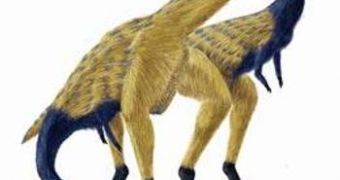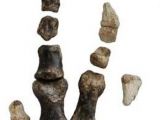Anthropologists and biologists have long hypothesized that birds are the modern descendants of dinosaurs, which evolved and developed flight capabilities as an adaptation to their surrounding, or as a form of defense. However, a major gap in the theory was, until now, the fact that archaeological digs failed to uncover a missing link between birds' wings and dinosaurs' fingers. A recent find, of a peculiar dinosaur, “caught” half-way on the evolutionary scale to early birds, may shed some light on the path the giant lizards took to reach the skies.
In a new study, performed on fossils recovered from the Junggar Basin in western China, researchers proved that, for many years, anthropologists had been mistaking the dinosaurs' 2, 3, and 4 digits as 1, 2, and 3. This find is crucial, because it could better explain the connection between the way dinosaurs evolved their fingers, and how birds developed their wings. In previous studies, experts determined that wings were generally formed when the future bird was still an embryo. The second, third and fourth digits fuse together to create the skeleton of the wing.
Seeing how, until now, researchers believed that the three fingers dinosaurs such as the Tyrannosaurus Rex and the Velociraptor had were the first, second and third, it made no sense to say that birds evolved from them. But the new fossil, which was found in a rock that formed some 156 million to 161 million years ago, during the Jurassic Period, showed peculiar formations around the base of the second finger, which led the scientists analyzing it to realize that they had been mistaking the number of the bones between the two classes of animals for a long time.
The find “can be viewed as a kind of 'missing link' that shows an intermediate digital morphology between living birds and more primitive theropods,” Palaeontologist Paul Barrett, from the London-based Natural History Museum, said, quoted by Nature News. “A lot of the arguments depend on bird wings being formed from the second, third and fourth digits and it is possible that they are not,” Yale University Evolutionary Geneticist Günter Wagner, who represents a body of researchers that think that the new finds are viewed with too much enthusiasm, added.

 14 DAY TRIAL //
14 DAY TRIAL // 
